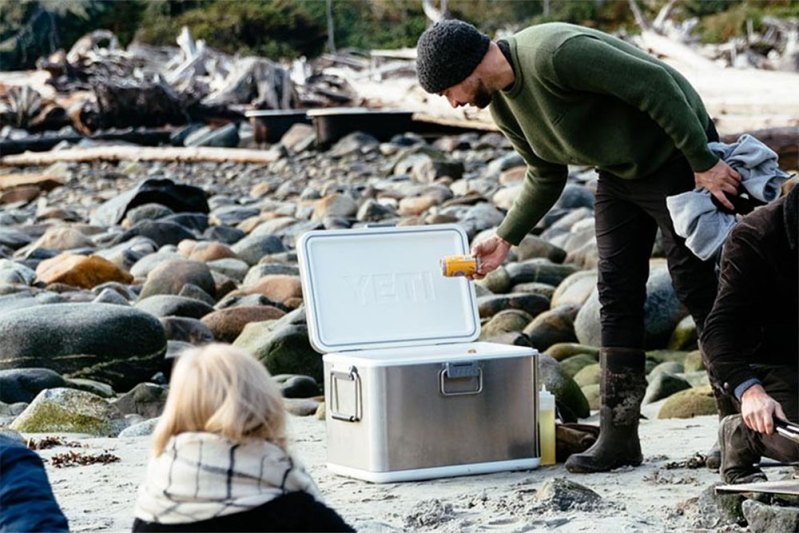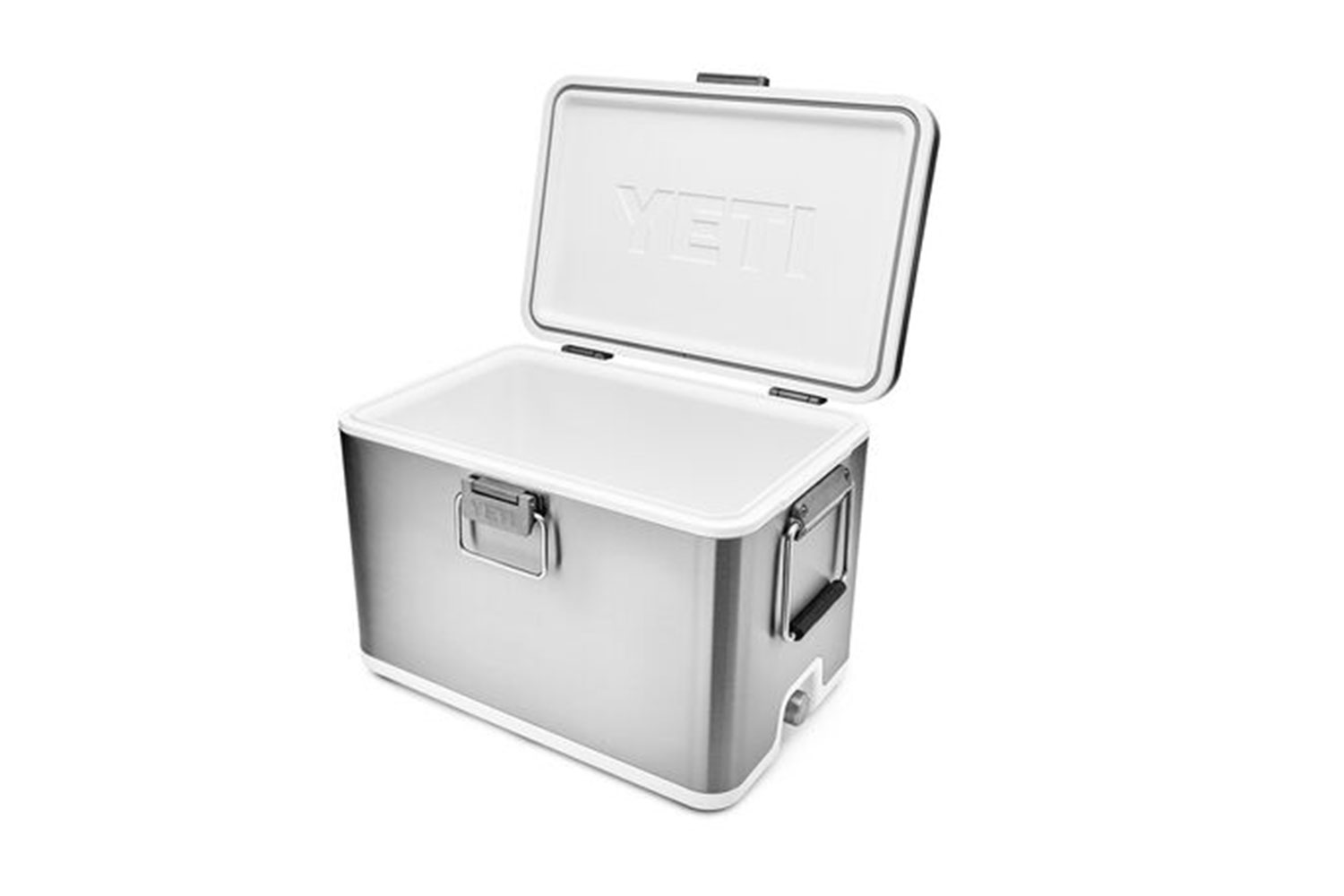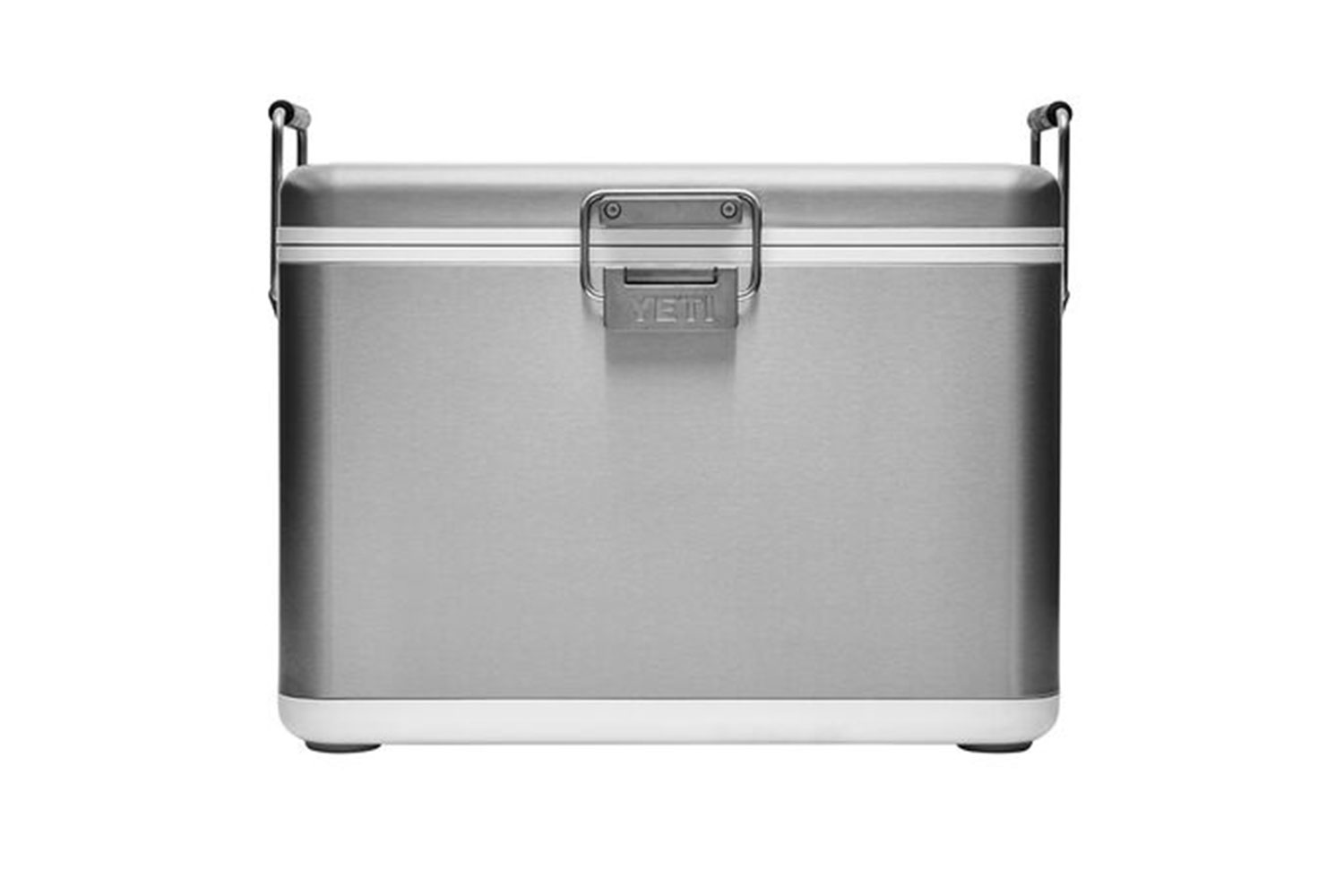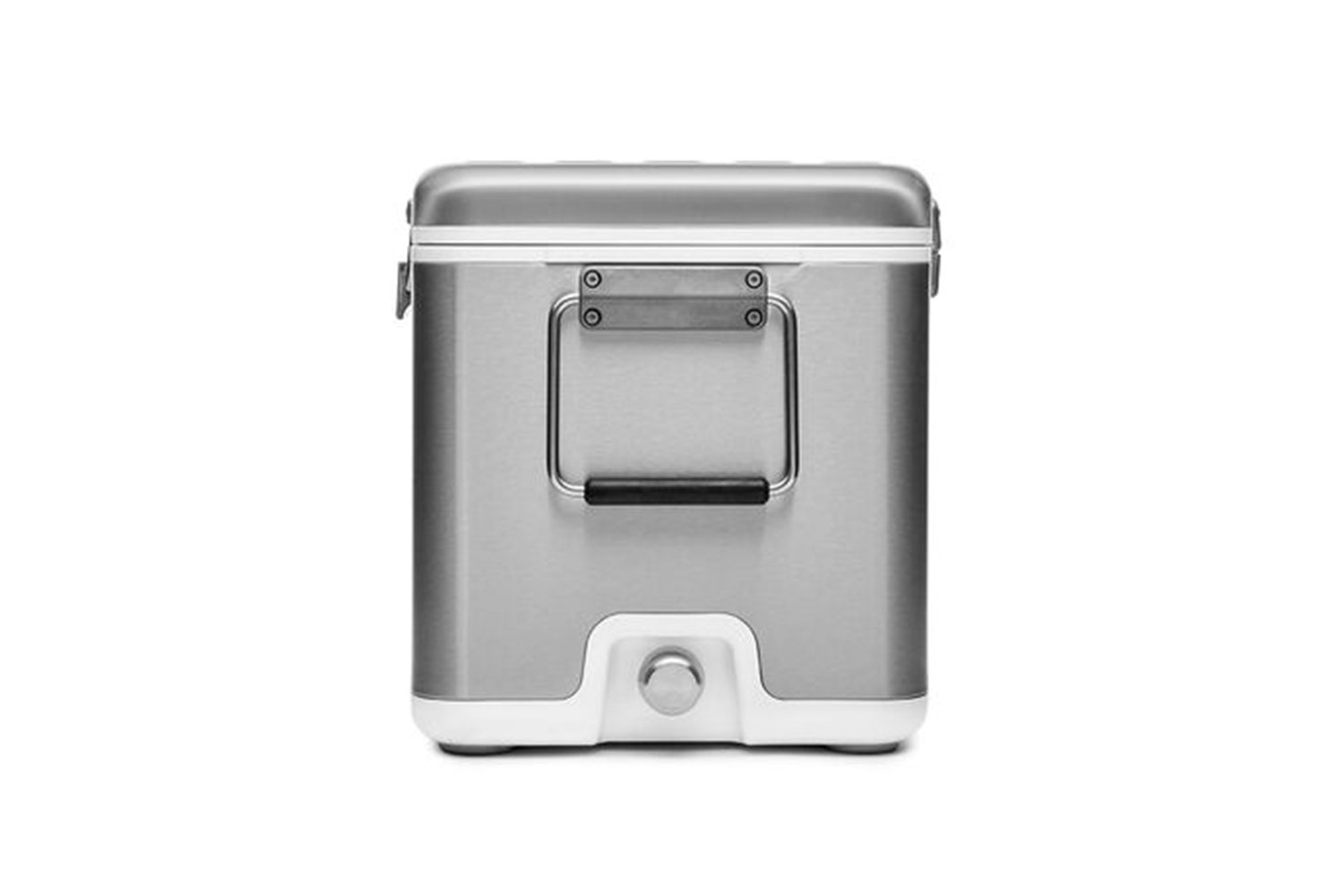
Few things polarize car campers, fishermen, and tailgaters like talk of “premium coolers.” Yeti and Pelican are brands revered by many, while others chastise them as ridiculously overpriced novelties marketed to yuppies who don’t know any better. The debate is only set to become more contentious with Yeti’s announcement of an all-new flagship $800 vacuum-insulated cooler.
We won’t lie: It’s easy to balk at the $800 price tag. This is just a cooler, after all. But, the Yeti V Series Stainless Steel Cooler delivers something that’s been surprisingly lacking in the cooler industry: Vacuum insulation. Many companies have long relied on the technology in travel mugs, as it’s incredibly efficient at keeping hot drinks hot and cold drinks cold. Most engineers consider it to be the single most effective way to insulate just about anything. Yeti itself uses vacuum insulation in its Rambler Drinkware. It’s odd, but it seems no other company has thought to use the same tech in its coolers as well.
The V Series cooler boasts vacuum-insulated panels all around, including in the lid. The plastic body is wrapped in kitchen-grade stainless steel that acts as a secondary insulation layer. It’s also tough, handsome, and designed to wear beautifully with age. The dual cast aluminum hinges are sturdy and built to last while a durable, single-center latch keeps everything on lock-down. A deep seal drain plug in the bottom is leakproof and makes draining the cooler simple without having to pour out the contents from the top.
With exterior dimensions of roughly 23 x 17 x 15-inches, this medium-sized cooler is a surprisingly hefty 35 pounds empty. Given that weight, the lack of built-in wheels like those found on the 37-pound Yeti Tundra Haul, for example, seems like a strange oversight. Still, the 55-quart Yeti V Series Stainless Steel Cooler is roomy enough to carry 65 pounds of just ice or 46 cans of beer (assuming a 2:1 ice-to-can ratio by volume).
In a recent three-day, head-to-head test between the new V Series and Yeti’s own Tundra cooler (considered by many to be the gold standard of premium coolers), Popular Mechanics confirmed the former delivers on its promise. “By the end of the test, the staying power of the V Series’ vacuum panels became clear,” the tester concluded. More specifically: “The cans that stayed in the V Series for all 72 hours were nearly 2.5 degrees colder, on average, than the Tundra cans chilled for the same amount of time. Even more impressively, the V Series retained 44% more ice at the end of the test.”
The Yeti V Series Stainless Steel Cooler goes on sale on December 5. If $800 is too rich for your wallet, however, check out our roundup of the best coolers on the market in 2019.






